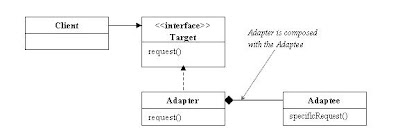Linked list is a fundamental data structure, which uses reference stored in each node to iterate through subsequent nodes. A linked list has many types like singly linked list, doubly linked list and circular linked list. Following is a simple bare bone implementation of singly linked list:
The base interface:
public interface LinkedList{
public boolean add(T t);
public boolean remove(T t);
public void removeAll();
public int size();
public boolean isEmpty();
}
Class representing each node:
public class LinkNode{
private LinkNodenextNode = null;
private T node = null;
public LinkNode() {
}
public LinkNode(T node) {
this.node = node;
}
public T getNode() {
return node;
}
public void setNode(T node) {
this.node = node;
}
public LinkNodegetNextNode() {
return nextNode;
}
public void setNextNode(LinkNodenextNode) {
this.nextNode = nextNode;
}
public String toString() {
return node.toString();
}
public int hashCode() {
return node.hashCode();
}
public boolean equals(LinkNodet) {
return node.equals(t.getNode());
}
}
Implementation for a singly linked list:
public class SingleLinkedListimplements LinkedList {
LinkNodeheader = null;
LinkNodelastNode = null;
public SingleLinkedList() {
}
public boolean add(T t) {
LinkNodenewNode = new LinkNode (t);
if(header == null) {
header = newNode;
}
else {
lastNode.setNextNode(newNode);
}
lastNode = newNode;
return true;
}
public boolean remove(T t) {
LinkNodetmp = header;
LinkNodeprev = null;
while(tmp != null) {
if(tmp.getNode().equals(t)) {
if(prev == null) header = null;
else if(tmp.getNextNode() != null) prev.setNextNode(tmp.getNextNode());
return true;
}
prev = tmp;
tmp = tmp.getNextNode();
}
return false;
}
public void removeAll() {
header = null;
}
public boolean isEmpty() {
return header == null;
}
public int size() {
LinkNodetmp = header;
int size = 0;
while(tmp != null) {
size++;
tmp = tmp.getNextNode();
}
return size;
}
public String toString() {
StringBuffer str = new StringBuffer("[");
LinkNodetmp = header;
while(tmp != null) {
str.append(tmp.toString());
tmp = tmp.getNextNode();
if(tmp != null) str.append(", ");
}
str.append("]");
return str.toString();
}
}
Test class which uses the singly linked list implementation:
public class LinkedListTest {
/**
* @param args
*/
public static void main(String[] args) {
// TODO Auto-generated method stub
LinkedListlist = new SingleLinkedList ();
System.out.println("Is list empty? " + list.isEmpty());
list.add("1");
list.add("2");
list.add("3");
list.add("2");
list.add("2");
list.add("3");
System.out.println(list.size());
System.out.println(list);
System.out.println("Is list empty? " + list.isEmpty());
list.remove("2");
System.out.println(list.size());
System.out.println(list);
System.out.println("Is list empty? " + list.isEmpty());
list.removeAll();
System.out.println("Is list empty? " + list.isEmpty());
}
}



